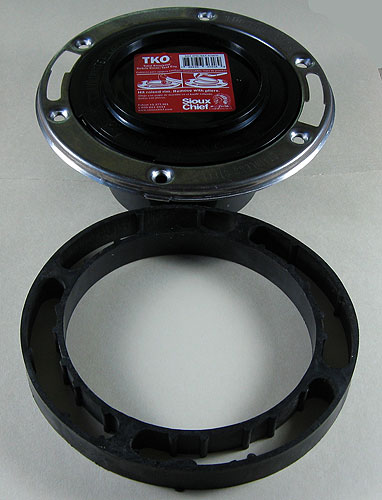TechInstructor
Member
We are doing our rough plumbing and need to install the toilet flange at the proper height to allow for the thickness of the floors. We are planning to use 3/4" hardwood floors, but we need some advice as to how to install the toilet flange so that it will not have to be removed later when the flooring is installed.
Our thoughts were to install a square of 3/4" plywood that would be slightly larger than the flange diameter but smaller than the width of the toilet base. Then the hardwood flooring could be butted up against plywood. Consequently the plywood and the flange could remain in place when the finished floor is installed.
Are there materials other than plywood that would work better in this application? We've thought about polypropylene - if we could find a 3/4" piece. Any suggestions?
We are also concerned about moisture getting under the toilet, either from leaks (hopefully not) or from condensation caused by the cool water in the bowl. Years ago, my husband heard of a pad of some polymer that was installed under toilets to prevent any moisture from getting onto the floor. Does anyone know what this is and if it is still sold? Suggestions please?
We thought about using some of our left over Bituthene (bituminous sheet membrane) for this purpose. We would cut the Bituthene into the shape of the toilet bowl base, cut out for the flange and stick this onto the floor after the finished floor is installed. Once the toilet bowl is installed it would be sealed along the outside. The Bituthene would make the floor about 1/16" higher under the rim than under the flange.
How would this affect the wax seal?
How much variation can there be in the floor height between the floor under the flange and the floor under the rim and still get a good seal from the wax ring?
Thanks in advance.
Our thoughts were to install a square of 3/4" plywood that would be slightly larger than the flange diameter but smaller than the width of the toilet base. Then the hardwood flooring could be butted up against plywood. Consequently the plywood and the flange could remain in place when the finished floor is installed.
Are there materials other than plywood that would work better in this application? We've thought about polypropylene - if we could find a 3/4" piece. Any suggestions?
We are also concerned about moisture getting under the toilet, either from leaks (hopefully not) or from condensation caused by the cool water in the bowl. Years ago, my husband heard of a pad of some polymer that was installed under toilets to prevent any moisture from getting onto the floor. Does anyone know what this is and if it is still sold? Suggestions please?
We thought about using some of our left over Bituthene (bituminous sheet membrane) for this purpose. We would cut the Bituthene into the shape of the toilet bowl base, cut out for the flange and stick this onto the floor after the finished floor is installed. Once the toilet bowl is installed it would be sealed along the outside. The Bituthene would make the floor about 1/16" higher under the rim than under the flange.
How would this affect the wax seal?
How much variation can there be in the floor height between the floor under the flange and the floor under the rim and still get a good seal from the wax ring?
Thanks in advance.


